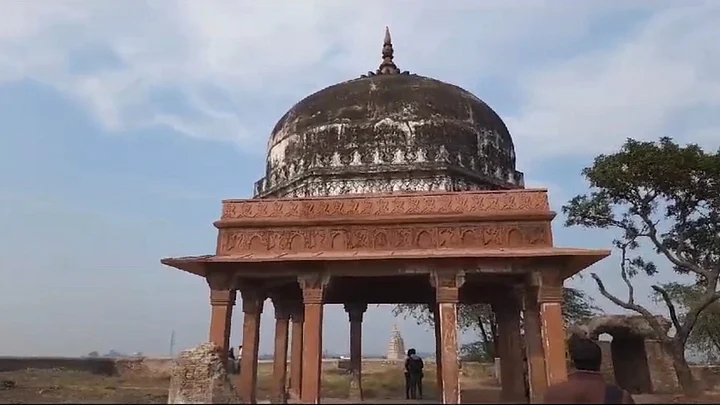After over half a century long dispute, a court in Uttar Pradesh’s Baghpat declared on Monday, 5 February, that the site in question is the Mahabharat-era 'Lakshagriha’ and not a graveyard and dargah of Sufi saint Sheikh Badruddin, as claimed by the petitioners.
“The plaintiff has completely failed to prove the present case, due to which in the opinion of the court, dismissal of the plaintiff's suit seems justified,” the court ruled in its order. Civil Judge Junior Division of the District and Session Court of Baghpat Shivam Dwivedi dismissed the petition, saying there was neither a graveyard nor a dargah at the site in Barnawa.
The decision comes just weeks after the Allahabad High Court allowed the Hindu prayers to be offered inside the Vyas Ka Tekhana (sealed basement area) of the Gyanvapi mosque complex in Varanasi. Last month, the Ram Temple was inaugurated in Ayodhya, where once the Babri Masjid stood and was demolished in December 1992.
'This Is The New Rajya': Hindu Side's Lawyer
Ranveer Singh Tomar, the advocate for the respondents in the petition, said that the Muslim side failed to prove that there was any graveyard here.
“The court has ruled this is no graveyard, it is a Lakshagriha since pracheen kaal (antiquity), it’s existed since the era of Mahabharata. There is no Muslim claim here. When Muslims came here (to rule), they demolished structures and did as they pleased. That won’t work any longer. Because now a new rajya is beginning. Now there is a new government,” Tomar said.
“This is actually a tilla (hill top) made during the Pandava era. There is a Gurukul also closeby. The court has declared that Muslims have no claim here. Their case has been dismissed,” Tomar added.
Tomar said that the Muslim side can appeal the lower court’s decision in the high court if they wish to, but that none of the evidence proves that this is a sufi shrine.
Advocate Shahid Khan, representing the case on behalf of the plaintiff, expressed their intention to move the higher court and present their case.
“It’s true that the court has ruled in their favor and our case has been dismissed. But we plan on appealing the lower court’s decision in the high court,” Khan said.
The History
In the Baghpat case, the plaintiff in question is Mukeem Khan, who back in 1970 alleged that the site is actually the dargah or shrine of Sufi saint Sheikh Badruddin. Brahmachari Krishnadutt Maharaj, the founder of the Lakshagriha Gurukul, was made a respondent in the case. Incidentally, both the original litigants, Khan and Maharaj, are deceased. Their family members have been handling the case for a few years now.
Khan, a resident of Barnawa in Baghpat where this site is, had in 1970 filed a petition a court in Meerut in the capacity of an office bearer of the Waqf Board at the time. Khan had argued that the place is a sufi shrine and needs to be declared as such. The case was subsequently moved to the Baghpat court.
The site in dispute is a hilltop or a tilla with a tomb on top.
In 2018, the Archeological Society of India (ASI) gave its nod and set up a camp in Baghpat to excavate the site. Local historians had argued that the site has has debris under it of the Mahabharata era ‘Lakshagriha’ (Lacquer House) and the tunnel used by the Pandavas to escape.
“The reports of the excavation done by the Archaeological Survey of India show that this is a 4500-5000 year old site. While this civilisational evidence is buried underneath, the hill top is of the Sultanate era. Looking at the tomb, the Muslim side has long argued that this is actually the grave or shrine of Sheikh Badruddin and people should be able to come and pray there,” said Amit Rai Jain, director of Baraut-based Shehzad Rai Research Institute.
“Now that the court order is out, I believe the materials that have come out of the excavation should now be made into a museum for the people to come and visit,” Rai added.
